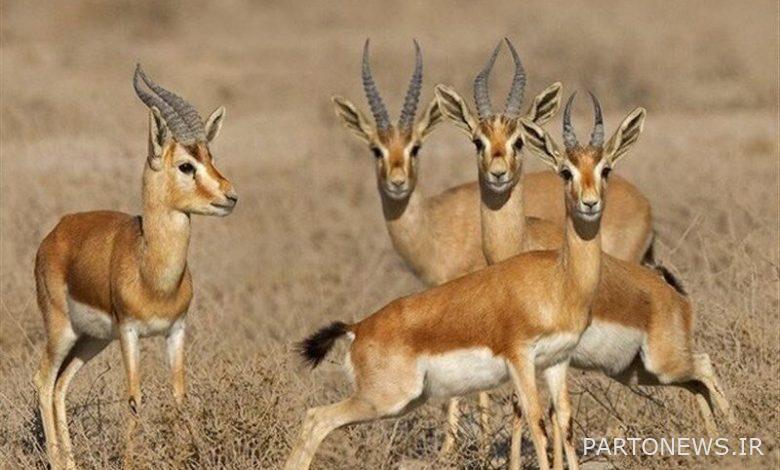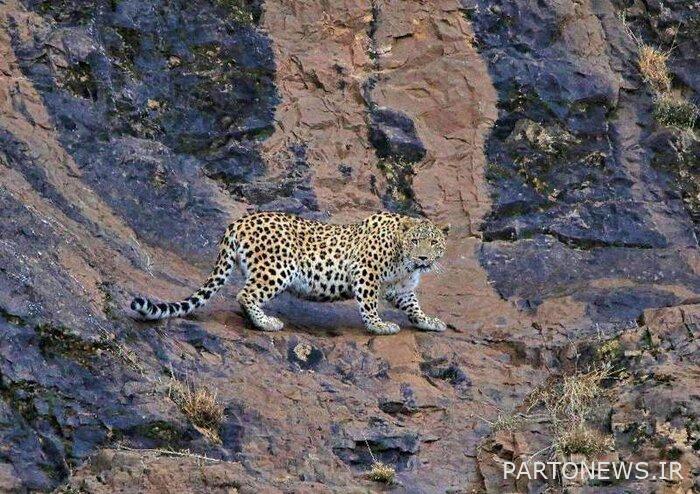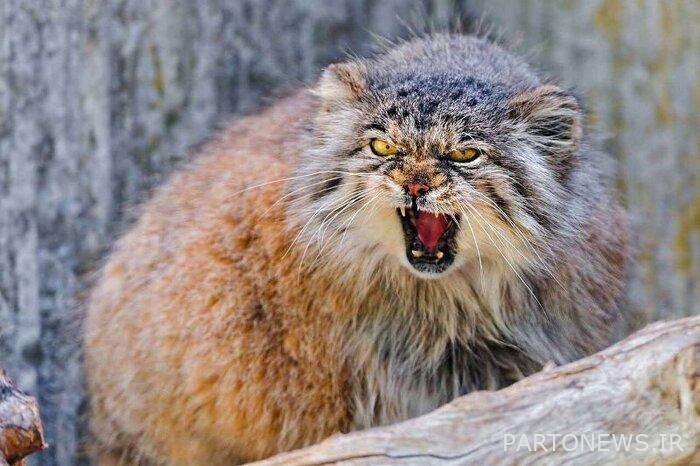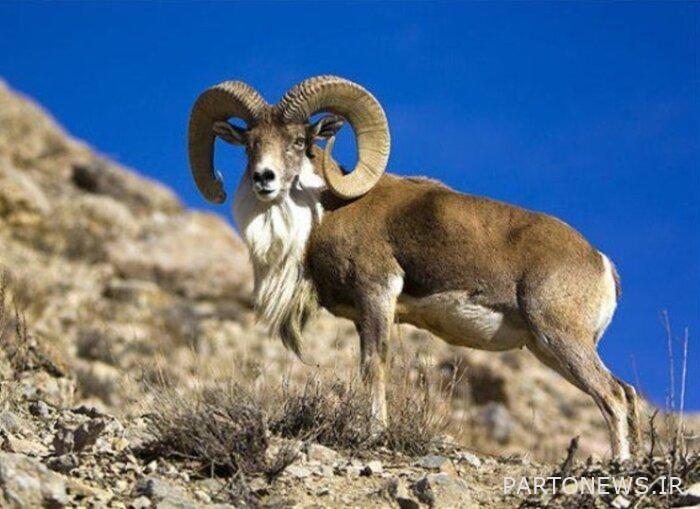North Khorasan is a frame of biodiversity

North Khorasan is one of the few provinces with high biological diversity, and the plains and mountains of this region of the country are a safe place for valuable and important species, and this beautiful land is ready to welcome summer tourists. Fewer provinces in the country can be found that have biodiversity. He saw a desert, a Caspian and a mountain at the same time, and North Khorasan has this divine gift, and this biological diversity has also led to a great diversity of animals.
North Khorasan with an area of 2 million and 800 thousand hectares is located in the northeast of the country and covers 1.7% of the country’s area, and this province contains several different ecosystems and is considered a treasure of biodiversity.
Travelers crossing the Asian road in this area from the northeast of the country, when passing through the Mirazbaylu region in the province, if they slow down, they can easily see herds of deer, scenes of wild grazing that are attractive to every viewer and with After a short distance on this route, travelers will reach the habitat of the bear, the brown bear is one of the important and prominent species of Iran’s wildlife, and this wild species lives in different areas of North Khorasan, including Garakhod protected area.
The Hyrkani forests in the west of the province, which is the habitat of Meral, have also added to the animal diversity of this region, and the Miandasht wildlife sanctuary in the middle of the Esfrain-Jajrom route, including the habitat of the Asiatic cheetah, with the vegetation of Tag and Gaz and mountainous areas, which every passer-by pulls him to himself.
This province is the source of Orial ram breeding, the largest wild sheep in Iran and Aras forests, and tourists can leave happy memories when they visit this center in the Badranlovi area of Bojnord.
In this province, there are areas in Bojnord and Shirvan with moderate mountain climate, Mane and Samalqan and Esfrain with moderate climate, and Jajarm and Garmeh with desert climate.
Vegetation in North Khorasan is remarkably diverse and variable due to its climate, so that in this region, rivers and small-leaved forests along with deserts and poor pastures can be seen at a short distance from each other.
Natural potentials and capabilities in North Khorasan have created suitable platforms for nature tourism and attracting tourists and travelers.

North Khorasan, Maman Panlang, Iran
The Deputy Director of Nature and Biodiversity of the North Khorasan Department of Environmental Protection in explaining the natural tourism capacities of the province said: All the protected areas in this province are home to leopards, but Sarigal Esfrain National Park is considered one of the densest habitats of this valuable species in the world. Based on the results obtained from the images of the environmental trap cameras, the density of the leopard population in Sarigal National Park is high.
Alireza Baghchaqi added: Most of the mountains of this province are the habitat of leopards, and this province has a favorable situation in terms of the population of this beautiful feline, although it is not possible to provide accurate statistics of the population of leopards in the province, because leopards are nocturnal and isolated animals and mostly hide themselves. Because of this, it is rarely seen, but in the last few years, telephoto cameras installed in Sarigal National Park in Esfrain city have recorded numerous images of leopards.
He stated: Considering that the majority of the population of this species remains in Iran and fortunately its conditions are suitable in North Khorasan province, Iran can play a decisive role in the survival of this subspecies of Asian leopards in the Middle East, South and West Asia. be
Baghchaghi added: Due to its high adaptability, the leopard lives in most mountainous, steppe, forest and dry mountain habitats in the desert regions of the province, and unfortunately, the Iranian leopard has faced challenges in recent years such as habitat destruction, reduction of prey species, Facing hunting and extermination.

Habitat of rare animal species
The director of wildlife protection and management of the North Khorasan Department of Environmental Protection said: Many of the country’s valuable and representative species, some of which are at risk of extinction, make this province a safe place to live and in the ecosystems They live in forests and mountains, steppes and plains.
Behrouz Jafari stated: North Khorasan is one of the few provinces in the country with considerable capacity in the fields of natural environment and biodiversity.
He stated: Many valuable and important species of the country, such as cheetah, leopard, brown bear, caracal, palas cat, aurial ram, kole and goat (pazen), deer, golden eagle, desert eagle, bald eagle, Egyptian vulture. And Quebec Dari, some of whose generations are at risk of extinction, find this province a safe place to live and live in its forest and mountain, steppe and plain ecosystems.
Jafari added: Biodiversity is high in North Khorasan and this shows the stability of security for wildlife. This province is a mountainous land with fertile plains in the middle of the Alborz mountain range, namely Aladagh and Shah Jahan in the south and Kepe Dagh in the north with a climate It is the Mediterranean that has created natural gifts and unique perspectives in every place of the province.
He said: This region of the country has three national parks, Saluk, Sarigol, and Zaman Aho, in addition to 44.6% of the Golestan National Park, a biosphere reserve, 3 protected areas, and 61% of the protected area of Garchacha in Faruj city. , a wildlife sanctuary, three national natural monuments, a wetland and four prohibited hunting areas in addition to the forest reserves (juniper, oak and hawthorn) and pastures under the management of the Forests and Ranges Organization, in terms of wildlife and species diversity. has a special
He said: Now there are 51 species of mammals equivalent to 25.9% of all mammals in Iran, 180 species of birds equivalent to 33.3% of all birds in Iran, 52 species of reptiles equivalent to 23.2% of all reptiles in Iran and 4 species of amphibians which are 20% of All the amphibians of Iran live in this province.
Jafari noted: According to the classification of the IUCN Red List in 2017, some species are under threat in the province. Among the mammals, the beautiful cheetah species is in critical status (CR), the leopard is in danger of extinction, and the ram and sheep are endangered. All Oriel and goats, deer, and yolks are in a vulnerable situation.
The director of wildlife protection and management of North Khorasan Department of Environmental Protection said: From the category of fishes, the orange and the Asian turtle are in a vulnerable situation.
He added: Among the birds, the desert eagle, yellow-breasted yellow-breasted plover, and Egyptian vulture are in danger of extinction, and the golden eagle, the palas houbre sea eagle, the ewe, and the common eastern lunar cuckoo are in a vulnerable situation.
The director of wildlife protection and management of North Khorasan Department of Environmental Protection added: Currently, with the round-the-clock efforts of environmentalists, non-governmental organizations, and nature enthusiasts, there are more than eight thousand and nine hundred Uryal rams, sheep, goats, and deer. They live in the mountainous and plain habitats of the province.

The habitat of the rare Orial ram species
Director General of Environmental Protection of North Khorasan also said: Orial ram is the environmental symbol of the province, Saluk and Sarigal Esfrain National Park is the habitat of this type of ram in the country, and the Orial ram of these two regions can be considered the purest ram in terms of genes. .
Reza Shekarian stated: In this province, there are three national parks of Saluk and Sarigal in Esfrain and Zaman Aho in Jajarm, four protected areas of Saluk and Sarigal in Esfrain, Garkhod in Mane and Samalqan, Gulol and Serani in Shirvan, a wildlife sanctuary in the region. Miandasht Jajarm and three natural and national monuments as well as Kepe Dagh Biosphere Reserve are located in Shirvan city.
He stated that this province is home to more than 50 species of mammals, more than 140 species of birds, four species of amphibians, eight species of fish and more than 50 species of reptiles. deer, Persian leopard, cheetah, brown bear, wild cat, palas cat, jungle cat, caracal, golden eagle, huma, pheasant, hubra, Dari partridge, balaban, tarlan, Egyptian vulture, all kinds of night owl, brown woodpecker and all kinds of birds Shekhari and juniper and oak forests, dense Goon meadows, Kolah Mirhasan and Chubak contain only a small part of the species diversity of this province.
Pointing out that different areas of North Khorasan are the landing places of migratory birds, he said: Every year, reservoirs, dams and rivers of this province host various species of migratory birds such as green-headed duck, khotka, serhenai duck, changar, flamingo, cormorant, There are egrets, gray herons, cockatoos, filoosh, butimars and crested ducks.
The General Director of Environmental Protection of North Khorasan added: The presence of 13,695 hectares of forest reserves including juniper, hazelnut, hawthorn, wild walnut and oak and the identification of 1,100 plant species, of which about 150 are medicinal, has made this province The diversity of vegetation also has a special place in the country.
In North Khorasan, 56 mammal species out of 197 species exist in the country, 150 bird species out of 532 species exist, 68 reptile species out of 228 species, four amphibian species out of 20 species and eight fish and aquatic species out of a total of 160 aquatic species exist in the country. Some of these species, such as the cheetah, leopard, Balaban, and Egyptian vulture, are in the critical and endangered categories of the International Union for Conservation of Nature (IUCN).
This province with its fertile plains in the middle of the mountain ranges of Aladagh and Shah Jahan in the south and Kope Dagh in the north has a Mediterranean climate that has created natural gifts and unique views in every part of the province.
North Khorasan with three national parks Saluk, Sarigol, Zaman Aho and having an area of 44.6% of the Golestan National Park, a biosphere reserve, three protected areas and 61% of the protected area of Garchacha of Faruj city, a wildlife sanctuary. , three national natural monuments, one wetland and four prohibited hunting areas, next to the forest reserve (juniper, oak and hawthorn) and pastures under the management of the Forests and Ranges Organization, it has a special place in terms of wildlife and species diversity.

